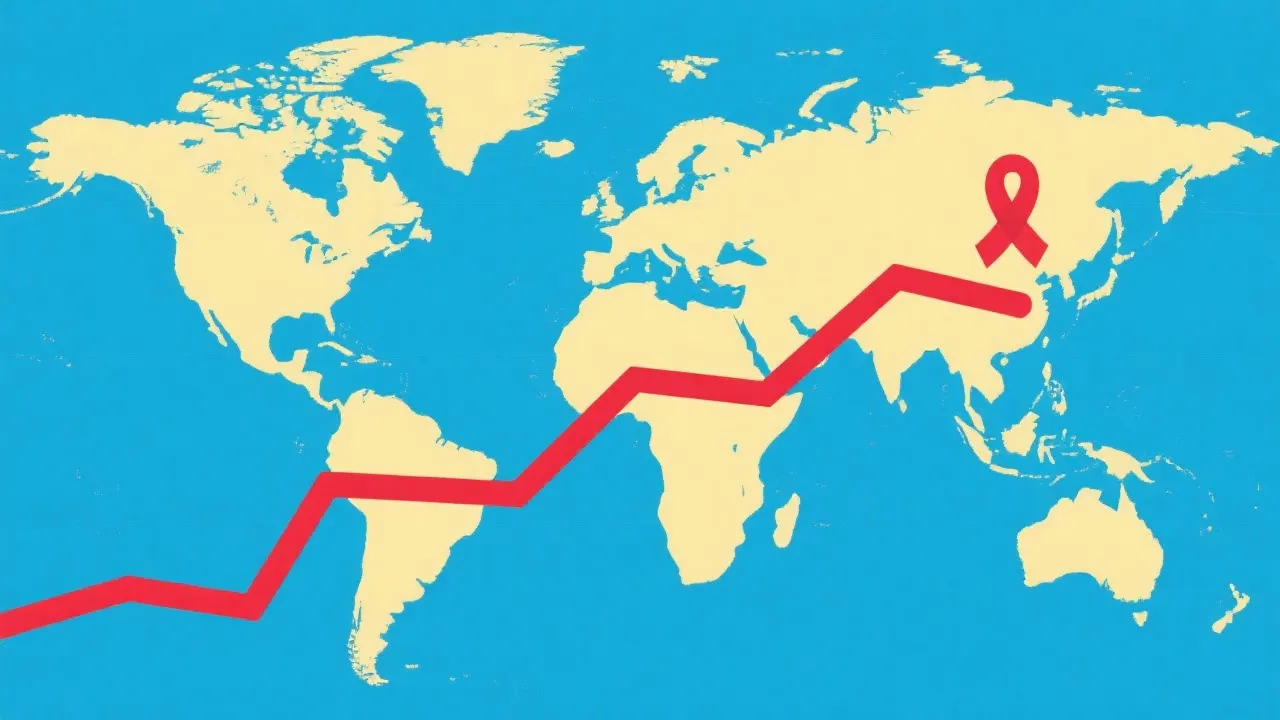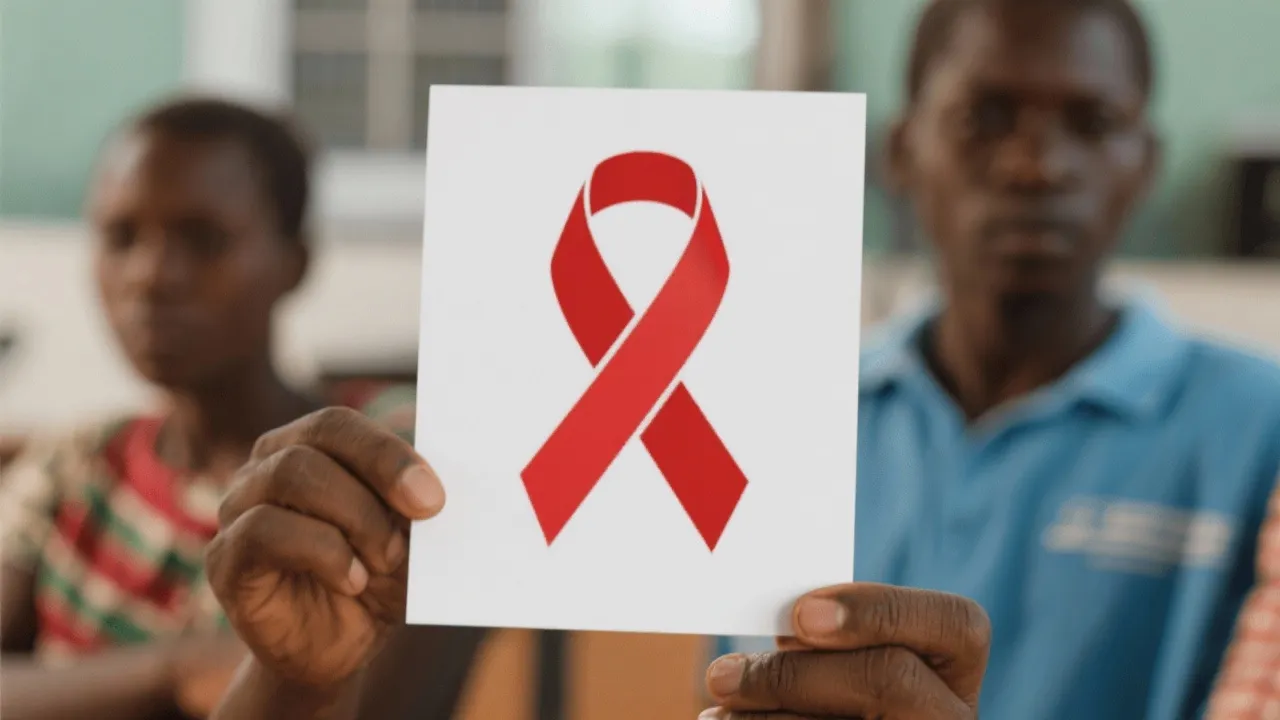Understanding the Decline in HIV Rates
The decline in HIV rates marks a significant milestone in global health efforts, reflecting successful intervention strategies and ongoing research. Since its identification, HIV has posed challenges worldwide, influencing public health, economies, and social structures. This article delves into the factors contributing to the declining HIV rates and examines the strategies propelling this progress.

Introduction to Declining HIV Rates
The decline in HIV infection rates signals a remarkable achievement in the realm of global health. Statistics from recent years indicate a consistent decrease in new infections, a trend attributed to a variety of factors that include better access to healthcare services, widespread awareness campaigns, and advancements in antiretroviral therapy. Over the past decade, numerous countries have reported significant reductions in new HIV infections due to effective interventions and a global commitment to tackling the epidemic. For instance, the Joint United Nations Programme on HIV/AIDS (UNAIDS) reported that between 2010 and 2019, there was a 23% decline in new infections globally. This achievement is the result of a concerted effort by governments, non-governmental organizations, and communities worldwide.
Global Efforts and Strategies
Efforts to curtail HIV infections have been multi-faceted, integrating various strategies such as the promotion of condom use, introduction of Pre-exposure prophylaxis (PrEP), and significant improvements in HIV testing. These strategies have been supported by both governmental and non-governmental organizations worldwide, leading to a broader reach and more effective implementation in both urban and rural areas. Governments have also partnered with private sectors and community-based organizations to create tailored HIV intervention programs, addressing population-specific needs.
In many parts of the world, the introduction of comprehensive sexual education in schools has been crucial. Teaching young individuals about sexual health, consent, and HIV prevention helps equip them with knowledge that can prevent infection and reduce stigma. Additionally, outreach programs targeting marginalized communities—such as men who have sex with men, sex workers, and intravenous drug users—have created safer spaces for individuals to seek both information and services.
Another effective global strategy has been the implementation of needle exchange programs. These initiatives reduce the risk of HIV transmission among intravenous drug users, providing access to sterile needles while offering educational resources about HIV prevention. These programs have been instrumental in countries such as Australia and Canada, showcasing the positive impact of harm reduction strategies in combatting the HIV epidemic.
Role of Antiretroviral Therapy
Antiretroviral therapy (ART) has been a cornerstone in the battle against HIV, improving the quality of life for those infected and substantially reducing the transmission rate. Continuous research and development in this domain have introduced more effective drug combinations with fewer side effects, which in turn have increased adherence rates among patients. Today, an undetectable viral load achieved through ART means that individuals living with HIV can lead healthy lives and effectively eliminate the risk of transmitting the virus to sexual partners, a concept known as "Undetectable = Untransmittable" (U=U).
Moreover, the accessibility of ART has dramatically improved, especially in low- and middle-income countries, driven by initiatives like the Global Fund and the PEPFAR (President’s Emergency Plan for AIDS Relief). These programs help to subsidize the costs of medications and provide training for healthcare workers, which is essential to ensure that patients receive the appropriate drugs and care. As a result, the number of people receiving ART has surged, with millions initiated on treatment across the globe.
Advancements in long-acting ART options have also brought about new possibilities. Injectable formulations that require administration every one to three months offer a promising alternative for people who may struggle to maintain daily oral regimens. This flexibility can help enhance adherence and long-term health outcomes. Such innovations reflect the growing understanding of how important it is to meet patients where they are—both in terms of their relationships with healthcare providers and their capacities to manage chronic treatment regimens.
Technological Advancements in Testing and Treatment
Innovative technologies have revolutionized both the testing and treatment paradigms of HIV. Rapid test kits have been instrumental in providing quick results, fostering early diagnosis, and thus facilitating timely treatment. These tests have been essential in community-based settings where individuals might otherwise avoid healthcare facilities, helping to create a situation where testing is ubiquitous and gently normalized. With the addition of self-testing kits, individuals can now take control of their health in the privacy of their homes, leading to increased diagnosis and reduced transmission.
Additionally, mobile health applications and telemedicine have broadened access to healthcare, making it more equitable and inclusive. These technologies allow individuals in remote areas to consult healthcare professionals without the need for extensive travel, which can often present significant barriers due to financial or logistical constraints. For instance, apps that remind patients when to take their medication or those that connect users to counseling services are vital tools in enhancing treatment adherence and mental health support.
Artificial Intelligence (AI) and data analytics are playing a growing role in HIV research as well. By leveraging large datasets, researchers can identify population trends, predict outbreaks, and tailor intervention strategies to specific demographics. These data-driven approaches enable public health officials to allocate resources more effectively and develop targeted awareness campaigns, ensuring that interventions are as impactful as possible.
Community Engagement and Awareness
Community-centric approaches have played a pivotal role in promoting awareness and reducing stigma associated with HIV. Educational programs, often supported by local leaders and celebrities, have effectively disseminated information, encouraging behavioral changes and enhancing public knowledge about prevention methods. Community engagement initiatives have highlighted the importance of involving those who are affected by HIV in crafting and implementing programs, ensuring that they meet the specific needs of the community.
Peer-led support groups have emerged as an effective means of fostering understanding and sharing experiences among individuals living with HIV. These groups not only provide emotional support but also empower participants with knowledge about their rights and healthcare options. Research has consistently shown that individuals who engage with peer support are more likely to adhere to treatment and engage in healthy behaviors, thereby reducing transmission rates.
Public events, such as World AIDS Day commemorations, play a crucial role in raising awareness and encouraging dialogue about HIV. These gatherings serve as vital reminders of the ongoing challenges faced by those living with HIV and the impact of stigma in various societies. The media also plays a significant role in disseminating accurate information, combating myths about the virus, and improving public perception of individuals living with HIV.
| Strategy | Impact |
|---|---|
| Pre-exposure Prophylaxis (PrEP) | PrEP has significantly reduced the risk of HIV infection in high-risk populations, making it a key strategy in prevention efforts. |
| Antiretroviral Therapy | Effective in lowering the virus load to undetectable levels, thereby minimizing transmission and improving quality of life for those infected. |
| Public Awareness Campaigns | Increased societal awareness has led to higher rates of testing, reduced stigma, and encouraged safer practices. |
| Needle Exchange Programs | These programs have reduced HIV transmission rates among intravenous drug users while providing access to additional health services. |
| Community Engagement Initiatives | Foster improved understanding, reduce stigma, and enhance networks of support for individuals affected by HIV. |
Challenges and Future Outlook
Despite the progress, challenges such as socio-cultural barriers, healthcare access disparities, and economic constraints persist. Addressing these challenges requires a concerted effort that involves policy changes, increased funding for research, and continuous education. For instance, political instability in certain regions can derail ongoing efforts, making it imperative for global health initiatives to adapt and respond appropriately.
Additionally, the emergence of new variants of HIV and drug resistance underline the necessity for ongoing research and responsiveness in treatment protocols. As viral strains evolve, it’s crucial that healthcare systems remain equipped to manage and treat these conditions effectively. Proactive testing and the development of new therapeutic strategies will be essential in the ongoing fight against HIV.
The future outlook hinges on sustaining the current momentum and adapting strategies in response to emerging data and global trends. For countries with high HIV burdens, it’s vital to continue addressing the socio-economic determinants of health that affect access to prevention and treatment services. Collaborations between governmental bodies, NGOs, and local communities will be critical to ensure holistic approaches that cater to individual and community needs.
Moreover, the integration of mental health services within HIV care models can enhance adherence to treatment and improve overall patient outcomes. Addressing the complete spectrum of health rather than focusing solely on the virus creates a more conducive environment for long-term management.
FAQs
What is causing the decline in HIV rates globally?
The decline is attributed to multiple factors, including improved access to antiretroviral therapy, widespread use of prevention methods like PrEP and condoms, and comprehensive public health campaigns. Societal shifts towards greater acceptance and understanding of HIV have also positively influenced testing and treatment acceptance rates.
How has technology impacted HIV prevention and treatment?
Technology has improved accessibility and efficacy in HIV testing and treatment, with rapid testing kits and telemedicine providing more convenient and widespread healthcare solutions. Additionally, the integration of artificial intelligence is facilitating better data promotion and analysis, driving targeted response efforts for at-risk populations.
What are the primary barriers to achieving further reductions in HIV rates?
Challenges include economic constraints, societal stigma, variable access to healthcare infrastructure, particularly in low-income regions, and variations in public policy commitment to HIV prevention and care. These elements can hinder the implementation of effective programs and access to life-saving treatments.
How can communities contribute to reducing HIV rates?
Communities can contribute by engaging in educational outreach, promoting safe practices, and creating supportive environments for individuals living with HIV. By normalizing discussions around sexual health and HIV, communities can play a significant role in combating stigma and encouraging individuals to seek testing and treatment.
What advancements are anticipated in the future of HIV prevention and treatment?
Future advancements may include the development of an HIV vaccine, improved treatment regimens that require less frequent dosing, and further innovations in technology that facilitate remote healthcare delivery. Continued research into the virus and new prevention strategies will also be vital as we strive to eliminate HIV transmission completely.





